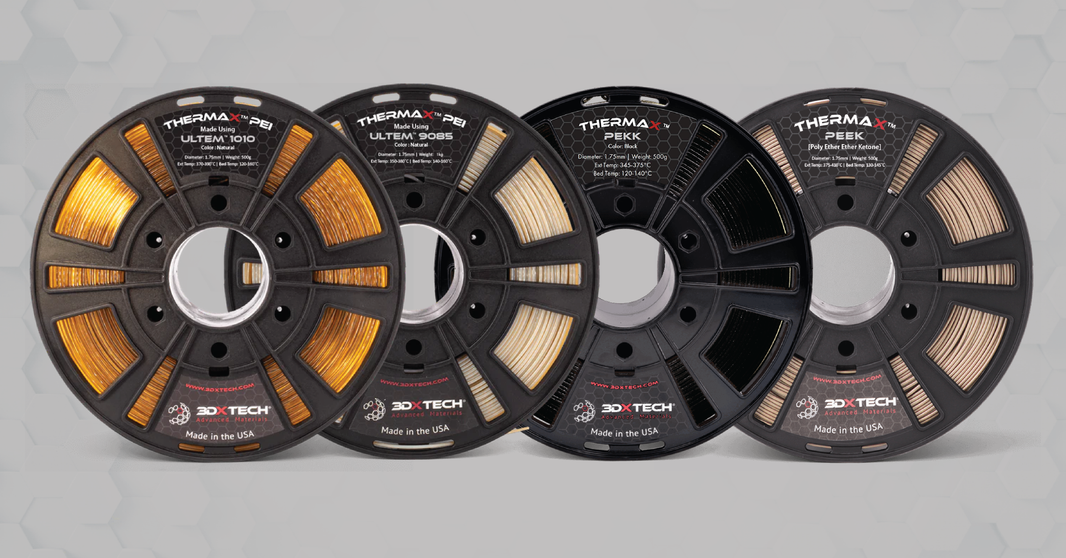From Operating Room to Orchestra: How a Medical Filament Found Its Voice in a Musical End-Use Product
SimuBone Simulated Modeling Filament was originally developed for medical applications like surgical simulation, orthopedic training, and clinical planning. But one innovative maker has discovered a new use for this specialty 3D printing material by bringing historical instruments back to life. From surgical tools to 3D printed flutes, SimuBone is proving to be a versatile and high-performance filament for both clinical and creative projects.
Customer: Jeff Wulf
Industry: Music and Instruments
Application: End-Use Product
When most people think of our SimuBone Filament, they might picture orthopedic training models, clinical planning tools, or even surgical simulation. After all, those applications are what the team here at 3DXTECH created this unique filament for. Simubone was specially formulated to offer the tactile response, screw retention, and visibility under X-rays that medical professionals rely on. But in the hands of Nebraska pastor, Jeff Wulf, Simubone found an unexpected and inspiring second life as a 3D printed historical flute.
As a lifelong flutist, Jeff became enthralled with the sound of early flute designs he heard in a YouTube video from early music expert Michael Lynn back in 2020. Jeff soon discovered that purchasing one of these hand-crafted flutes would be too expensive due to the time and experience it took expert craftsmen to make one. Instead of giving up, he turned to 3D printing and CAD (skills he had only recently taught himself) and recreated a Bizey flute based on plans from an abbey in Ireland. The 3D printing process proved to be an irreplaceable part of his process. It made the flutes not only accessible and replicable but also easy to refine. As Jeff explained, he can “print, walk away, and 12 hours later have a head for a Naust flute ready,” and even “tweak the undercuts of each hole” between iterations. With guidance and feedback from Michael Lynn, Jeff began to perfect his designs over two years of prototyping and selling his flutes.
Jeff’s work took another leap forward when a school in France approached him with an unusual request: they needed a small-sized replica of the rare Villars Terz flute to gift to their incoming students. Their previous maker had passed away, and they were unable to find a source of traditional hand-carved wooden flutes. Jeff accepted the challenge and meticulously recreated the flute using historical measurements sourced from a museum specimen. Yet, this smaller instrument introduced a new problem when it came to material limitations.
The ivory-colored PLA Jeff had been using for years began to feel insufficient. The reduced size demanded higher strength and better workability than any standard PLA could offer. That’s when he discovered 3DXTECH’s SimuBone Bone Modeling Filament. Originally designed for medical modeling, SimuBone proved to be exactly what he was searching for. As Jeff explains, “It’s incredibly strong and it sounds great! As a bonus, it prints better than any material I’ve ever used: and I tested nearly 50 rolls of everything during my early prototypes.”
SimuBone is engineered for realism in surgical simulations, especially when it comes to sawing and drilling. It is these exact qualities 3DXTECH originally intended for medical applications that make the material suitable for making flutes. Jeff explains that with more standard blends of PLA, he’d have to “sort of rub and tear" to force the material,” but finds that SimuBone “can be sanded and shaped easily.” Jeff finds SimuBone’s ease of sanding, crisp acoustic response, and refined surface quality make it the perfect match for a deluxe line of historically accurate flutes. Where other materials were too brittle or finicky, SimuBone offered reliability, finishability, and tone, three critical qualities for an end-use musical instrument.
SimuBone has now become the standard material for Jeff’s premium flutes, and it’s even being repurposed for other niche applications that traditionally require bone to be made. “A famous leatherworker from our church asked me to help recreate a [bone] tool that’s no longer made,” Jeff recalls. “The hard bone material was perfect for the project. He’s now sending them to other saddlery shops to help get them started.”
The versatility of SimuBone continues to surprise. Created as a low-cost cadaver bone substitute, it's now amplifying historical music and reviving legacy tools. This goes to show that even highly specialized materials can have unconventional, real-world applications far beyond their original scope.
To see more of Jeff’s incredible work, be sure to visit Michael Lynn’s YouTube channel. We would also be remiss not to mention that Wulf’s flutes aren’t the only instruments made with our filament. You can read our article about our wonderful customer, Forte3D, to learn how 3DXTECH’s carbon fiber filament is being used to create 3D-printed cellos. If you’re interested in using SimuBone for your own creative or clinical projects, you can check out the material here.







